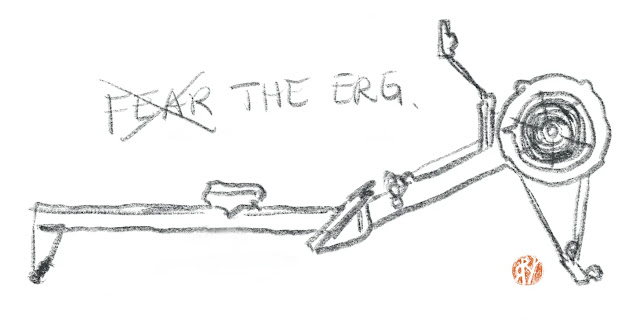Coxswain Resources
Introduction to Coxswains in Rowing
Welcome to our resource page dedicated to coxswains! Coxswains play an instrumental role in the success of any crew, but that role is often misunderstood or overlooked.
 |
| A vintage photo of the stern of an eight, with the coxswain steering |
In this page, we'll dive into the basics of coxing and provide helpful resources to improve your skills.
Role and Responsibilities of a Coxswain
The coxswain is the member of a rowing crew who sits in the stern of the boat and is responsible for steering, coordinating the crew, and providing motivation and feedback during a race or training. A coxswain is also responsible for safety, keeping an eye out for other boats or obstacles in the water.
Essential Skills and Qualities of a Coxswain
Coxswains need to possess several skills and qualities to excel in their role. These include clear communication, leadership, and a deep understanding of the sport of rowing. A good coxswain can motivate their crew, make strategic decisions during a race, and provide helpful feedback to improve the performance of the crew.
Leadership
A good coxswain should be able to take charge and lead the crew effectively. This means being confident, assertive, and able to motivate the crew.
Communication
Clear and concise communication is key in coxing. A coxswain should be able to communicate with the crew using simple commands and provide feedback on technique and strategy during a race or training.
Knowledge of Rowing
A coxswain should have a deep understanding of the sport of rowing, including technical aspects of the sport, equipment, and racing rules. The coxswain is essentially the coach on the water.
Situational Awareness
A coxswain must be aware of their surroundings at all times, keeping an eye on other boats, obstacles in the water, and weather conditions. This is especially important during races where coxswains need to navigate the course and make quick decisions.
Strategic Thinking
A good coxswain should be able to think strategically and make quick decisions based on the situation at hand. They should be able to adjust the strategy mid-race if necessary and keep the crew motivated and focused. As we've seen at the Head Of The Charles many times, this can include sorting out a way to deal with a broken rudder midstream during one of the most challenging head races in the world.
Positive Attitude
A coxswain should always have a positive attitude, even in challenging situations. They should be able to keep the crew motivated and focused on the task at hand, even when things don't go according to plan.
Trustworthiness
A coxswain needs to be someone that the crew can trust and rely on. They should be dependable and follow through on their promises—and also transparent on things like distance, time remaining, stroke rates and counts, etc., to ensure that everyone is on the same page and has a clear picture of where they are in the race.
Resources for Coxswains
If you're a coxswain looking to improve your skills, we've compiled a list of some of the best resources for coxswains from our coverage of rowing over the past decade, so you can start improving your skills right away.
Interviews:
- Charles Chat: Tips on Taking the Right Course from Five-Time Champion Leigh Heyman [coxswain's guide to racing the Head Of The Charles]
- Head Racing: The Coxswain's Perspective, with Phelan Hill of Team GB
- Seven Questions with World Champion Coxswain Phelan Hill
- Video Of The Week: Inside the Kiwi Men's Eight, with Coxswain Caleb Shepherd
A few of our featured recordings:
- Video Of The Week: Winter Training with the New Zealand U23 Men's Eight
- Video Of The Week: Inside the Temple-Winning Oxford Brooke's Men's Eight on Henley Sunday
- Head of the River Recording with Upper Thames Rowing Club
- Video Of The Week: Inside Dartmouth's Lightweight Eight at Sprints
- Video Of The Week: Abingdon versus Belmont Hill, Henley Royal Regatta
Further coxswain resources outside RR:
- Coxswain Recordings Archive, from Ready All, Row... by Kayleigh Durm — this is an exhaustive list of recordings across the web for coxswains, including practice and race videos and audio clips broken down by category and context (junior, collegiate, elite, masters)



